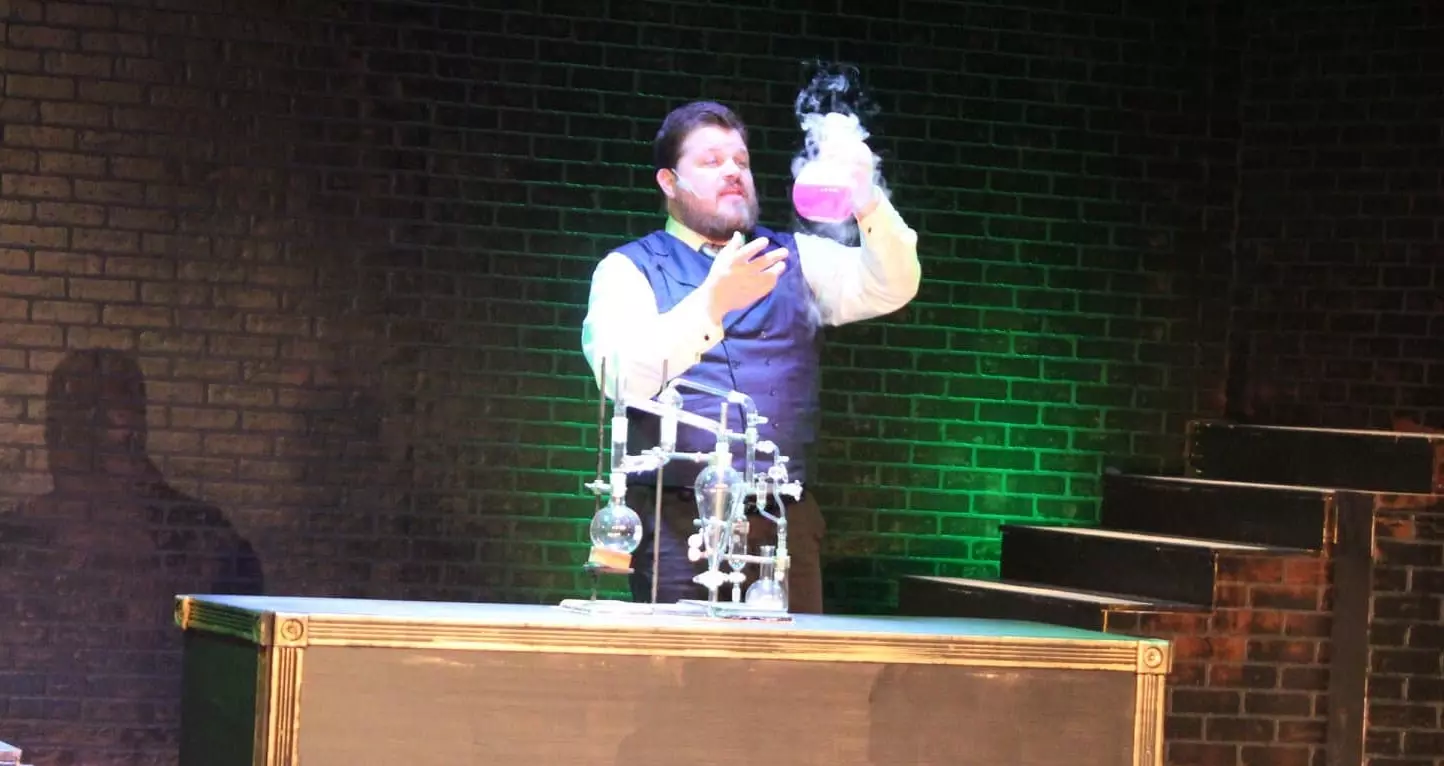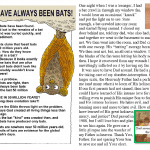The very talented Eric Bailey portraying Dr. Jekyll in Jekyll and Hyde: The Musical (edited photo by Michelle Mullins)
[Originally published as Another Special Effect Based on Chemistry]
I just got finished portraying Sir Danvers Carew in Jekyll and Hyde: The Musical. I had never seen or read the show before, so I didn’t know what to expect. It turns out that it is more of an opera than a musical. Most of the lines are sung, and the music is hauntingly beautiful. The cast was full of incredible singers, so the performances were remarkable. I got the opportunity to sing a duet with the young lady portraying my daughter Emma, who is engaged to be married to Dr. Jekyll. I also got to sing a lovely quartet with Emma, Dr. Jekyll, and John Utterson (Dr. Jekyll’s attorney). The music was incredibly challenging, but with lots of help from my fellow actors, I managed to pull it off.
The superbly-talented director had developed some important imagery for the show. The cast is divided into “the rich” and “the poor.” Dr. Jekyll is part of “the rich,” but when he turns into Mr. Hyde, he is part of “the poor.” The rich obviously wore much better clothes than the poor, but the director wanted something else to symbolize the divide between the two, so he used colors. The set was lit with green when the rich were being highlighted, and all the rich people had a splash of green on their costumes. The set was lit with red when the poor were being highlighted, and all the poor people had red in their costumes.
With this in mind, the director asked me if I could make a “smoking potion” that turns from green (representing Dr. Jekyll) to red (representing Mr. Hyde). I said, “no problem.” Then he added that the actor portraying Jekyll and Hyde must be able to drink the potion. That turned out to be a challenge. However, drawing on my experience writing a chemistry book for homeschooled students, I came up with something that worked pretty well.
Red (sometimes called “purple”) cabbage is loaded with a group of chemicals called anthocyanins. It turns out that these chemicals change color based on the amount of acid in their environment. They are red in acidic solutions, purple in neutral solutions, blue in slightly alkaline solutions, green in more alkaline solutions, and yellow in very alkaline solutions. That’s why red cabbage is reddish purple. The leaves are just a bit acidic, but close to neutral.
So I put lots of red cabbage leaves and water into a blender. After pulverizing the cabbage, I poured the result through a strainer and got a deep blue solution. It was blue because my tap water is slightly alkaline. I then added a very small amount of sodium hydroxide. At high concentrations, the chemical is caustic, but at low concentrations, it is just alkaline enough to make anthocyanins turn green. This mixture isn’t really drinkable, because it is alkaline enough to do damage to your throat and esophagus.
Dropping some dry ice into the green liquid made it look like it was smoking, and then I added clear vinegar. The vinegar turned the mixture acidic enough to make the anthocyanins red. While it is acidic, it is not nearly as acidic as vinegar, so it is pretty sour but safe to drink. The actor said that it tasted like sour asparagus. In the end, here is what it looked like during a dress rehearsal. Please note that using this short clip from the musical to illustrate the effect is considered “fair use” of a copyrighted work.
I did learn one thing in the process of making this effect. It turns out that an alkaline solution slowly deteriorates the anythocyanins so that they do not change back to red. Thus, the effect has a “shelf life.” I had to mix it right before the crew put it on stage, which was about seven minutes before he actually started making the potion. The anthocyanins didn’t change significantly over that time, but if you make the green solution even thirty minutes before it is used, the red color will be very weak.





